Cross-stitch is the oldest and best know of all embroidery stitches, it is very simple to do and a very relaxing hobby too. Cross stitch is the most important and commonly stitch used everywhere, it is the key to counted embroidery.
No limits in your creativity! You can embroider in any kind of linen or fabric. You can either work from pre-stamped items or from graphs, which is the most common.
One of the great advantages of needlepoint and cross-stitch in that you do not need a lot of different materials and complicated equipement- just an even weave fabric or canvass, needle and yarn, and a frame if you like using one.
The best way to learn how to embroider is to start choosing a small and simply chart . After you can being to embroider more complex designs like paintings, covers, tablecloths , pillows, carpets… you have not afraid to experiment!
After choosing the chart, I advise you to embroider initially on Aida cloth, because the squares are already prepared to stitch and obtain regular crosses. Remember that it is very important embroider with DMC or Anchor threads because they are more resistant.
Cross Stitch Embroidery – Materials
Before starting with the different techniques of counted threads embroidery, I wanted to suggest you the most important cross stitch materials to use. We need very few tools, each plays an important role and that is why we must know them well.
Here below I mention you the materials necessary to begin to embroider:
Embroidery Needles
Needles play a very important rule in embroidery. When you use a needle you must not create any tension on the thread or the fabric. The thread must be easily passed through the eye of the needle, causing no drag or tension on the thread. The needle should also move easily between the weave of the fabric, without having to be pulled and without leaving a hole in the fabric.
For cross stitch you can use tapestry needles, these are available in many sizes: with a large eye and all have a blunt point to prevent damage to the fabric . Choose a size of needles that slides easily through the holes of the fabric without distorting or enlarging them.
There are most types of needles, including sharps, crewel, straw, chenille or beeding needles, depending of the nature of the project and the desired effect. Do not leave needles or pins stuck in your fabric, as they will eventually rust and leave a stain that is almost impossible to remove . You can use a needle threader to place the folded wire of the needle threader through the eye of the sewing needle.
Embroidery Scissors
Embroidery scissors are small and sharp, keep them separate from your other scissors and only use them for embroidery so thay stay clean and sharp. keep them in a sheath to protect the points (and your hands).
There are two types of scissors: use dressmaker’s shears for cutting fabric and a small, sharp pair of pointed scissors for cutting embroidery threads.
Embroidery Frame and Hoops
There are in commerce various types and sizes of hoops and frames. The frame is important to keep the tissue very tense. There are various types of chassis and differ depending on the extent and form:
- Round or square hoops,
- Vertical embroidery frame
- HoopLoom
- Embroidery machines hoops
- Hoop clamps
Embroidery Thimble
A protective shield worn on the finger or thumb generally worn during sewing.
Embroidery Threads
It is very important to use only high quality threads: valuable embroidery work were lost by threads that have left the color to the first wash. To embroider you can use different kinds of materials, cotton threads, smooth linen thread, stranded silk or rayon threads, and pearl cotton.
Looking at the most common embroidery materials, you can make a classification based on three elements: the number of heads, twist and fiber. The number of heads indicate how many individual threads make up the thread, while the twist refers to the fact that the heads can not be separated.
Choosing the Type of Fiber
Cotton Embroidery: in pure Egyptian cotton yarn it is formed by four indivisible heads. Ideal for traditional embroidery, is available in a wide range of colors.
Cotton Perlé: during the manufacturing process, the thread is combed, singed by flame and the double mercerised. It is this double mercerising which gives it its beautiful pearlised sheen. The thread is soft, silky, does not fluff or kink. Twists of 2 inseparable stands.
Cotton Mouliné: in pure Egyptian cotton threads it is comprised of 6 easily seprable strands, you can vary your stitching results, depending on the number of strands used. Colours are washable and fade resistant
Wool Cotton: yarn is a more opaque, twine, used in general to work on canvas.
It should also consider the metallic yarn, which are usually used for work on canvas, clothes or evening for heads and accessories of some importance, and for Christmas parties.
The wool embroidery yarn is a very soft, but strong, and is useful for the work on canvas, threads can passing continuously into the holes of the cloth without damage de work.
The silk: it is used on fabrics particular read, for valuable work, and is a relatively expensive yarn. It requires a little ‘more skill compared to other yarn because attorciglia be very easily.
Even Weave Fabric or Canvas
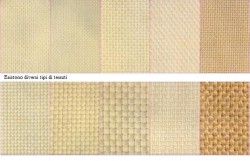
The cross-stitch can be run on any type of tissue, it is important to maintain regularity in the stitch.
You can use a normal fabric like:
Aida: Ideal for the cross-stitch technique, it is easy to manipulate your needle and obtain even stitches thanks to its precise grid-pattern weave.
Aida Linen: As beautiful as linen and as easy to stitch as Aida, this fabric comes in natural colours. The ideal fabric for needlework projects, using DMC Linen Thread. This fabric allows for easy and even stitching, thanks to its precise grid-pattern weave.
Waste Canvas: Its grid pattern makes it easy to follow the design. For cross-stitch on all kinds of articles (household linen, clothes…)
Linen: specially prepared for cross-stitch and counted-stitch. It comes in an attractive range of natural and pastel colours.
Canvas
Needlepoint Canvas: is available in various widths and gauges. Gauge refers to the number of holes to 2.5cm in the canvas weave. Is can range from a coarse rug canvas to a very fine petite point canvas.
The larger gauge canvas, having fewer holes to 2,5cm, is quicl to work on and produces a bulky item with a bold design, whereas a small gauge canvas allows for more detail but it is not as hard-wearing.
The main types of canvas are single-thread and double (or Penelope) canvas:
- The single-thread mono canvas has one weft andd one warp thread crossing each other, while
- double thread canvas has two weft and two warp threads. The advantage of double canvas is that you may fill in areas with tent stitch over the double-threads.
- Interlocking canvas is a type of single-thread canvas in which the weft and wrap threads are twisted together where they cross. If you are worried about your canvas deforming this is the one to use.
The single thread mono canvas is not twisted like this and will pull out of shape more easily if your tension is too tight. However, it is softer to hold and is preferably used especially for smaller projects.
When you buy canvas, allow at least 5cm of spare canvas all around the area of your finished needlepoint to take stitching and turning into accounts. For an upholstery project, add an extra 10 cm of spare canvas all around.
Evenweave:
It is easy to count the thread, thanks to this fabric’s extremely regular weave. It also has a soft texture, making it pleasant to handle. Evenweave fabric for cross-stitch, Hardanger and all forms of counted stitching.
Check Out Fabrics on:

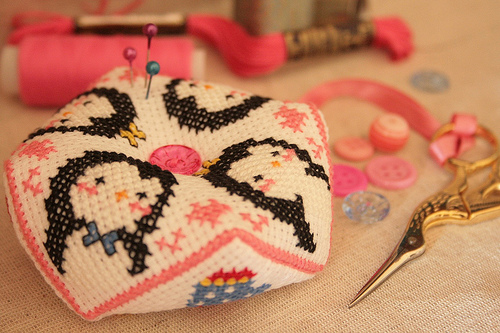
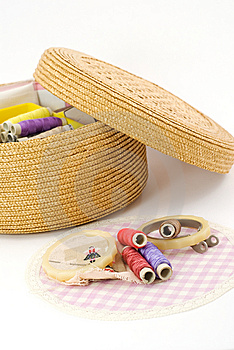
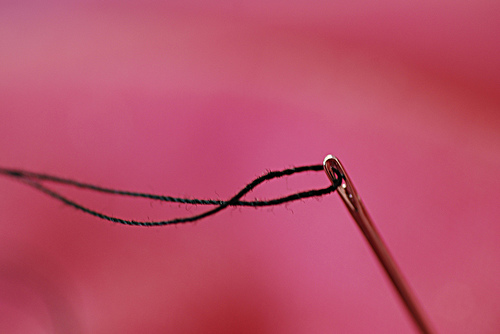

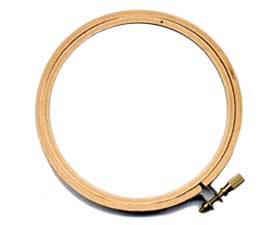
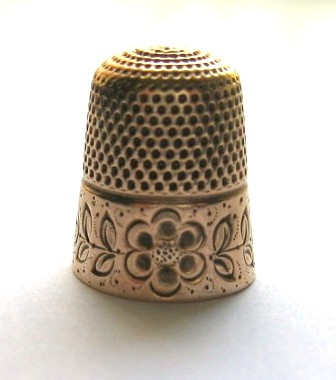

One thought on “Cross Stitch Materials”